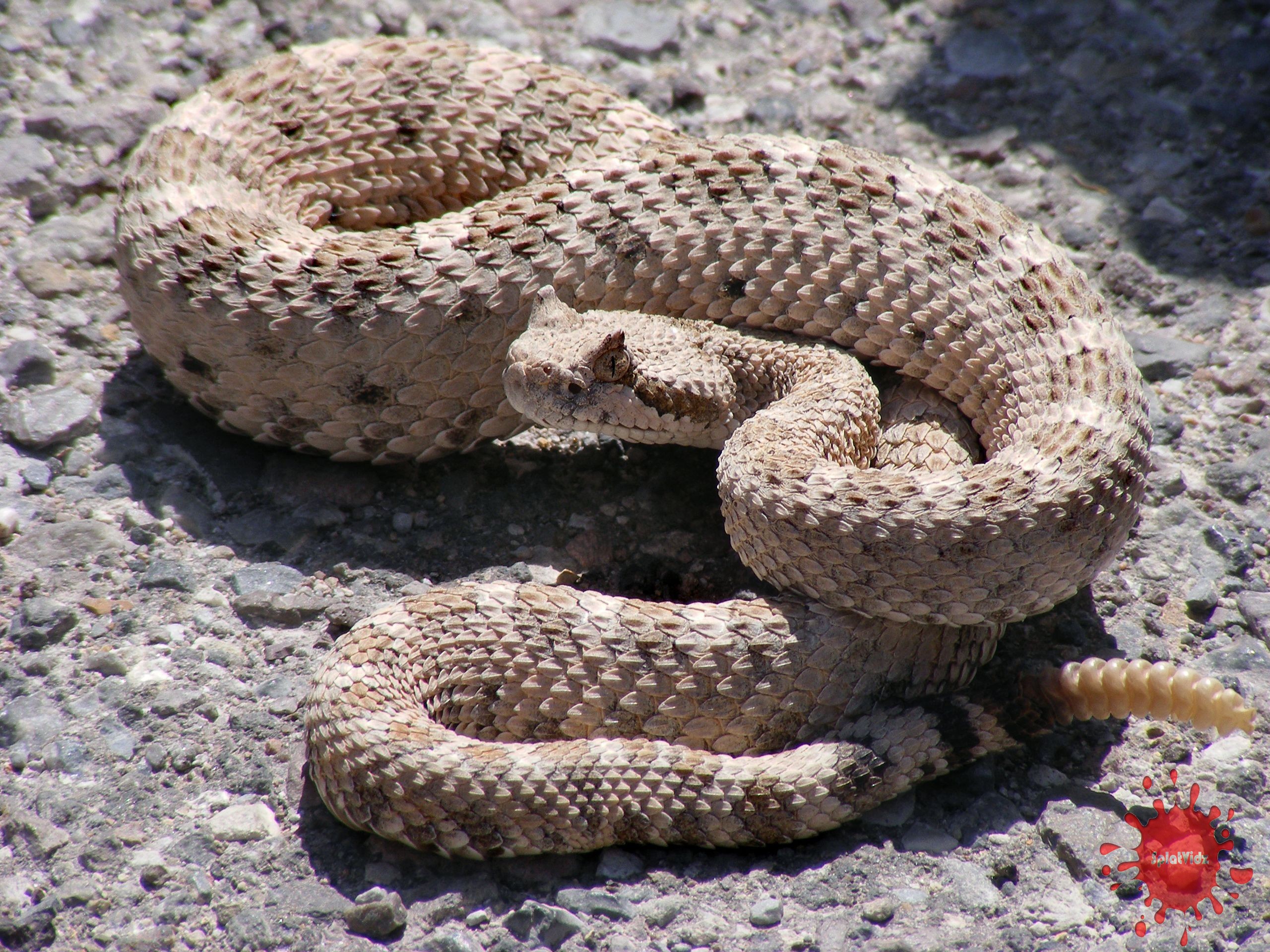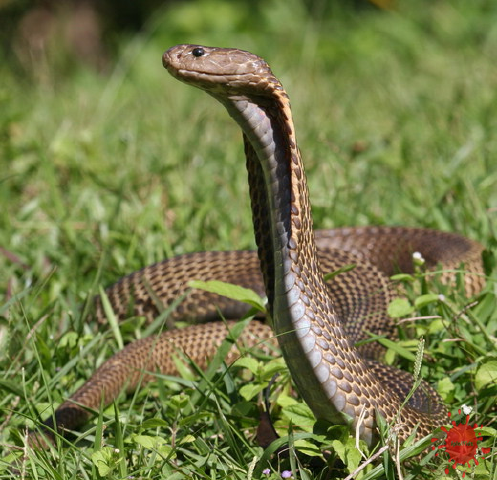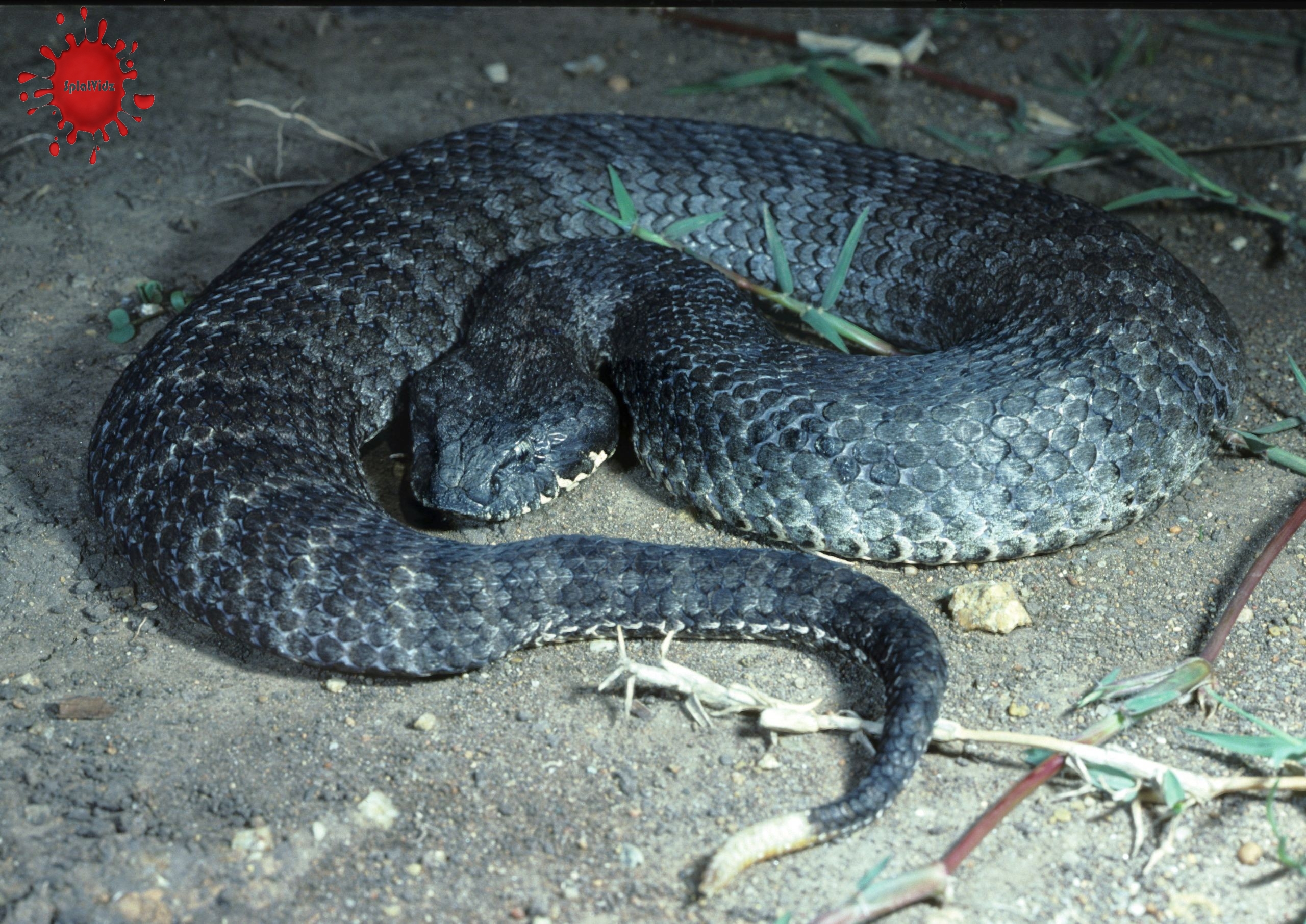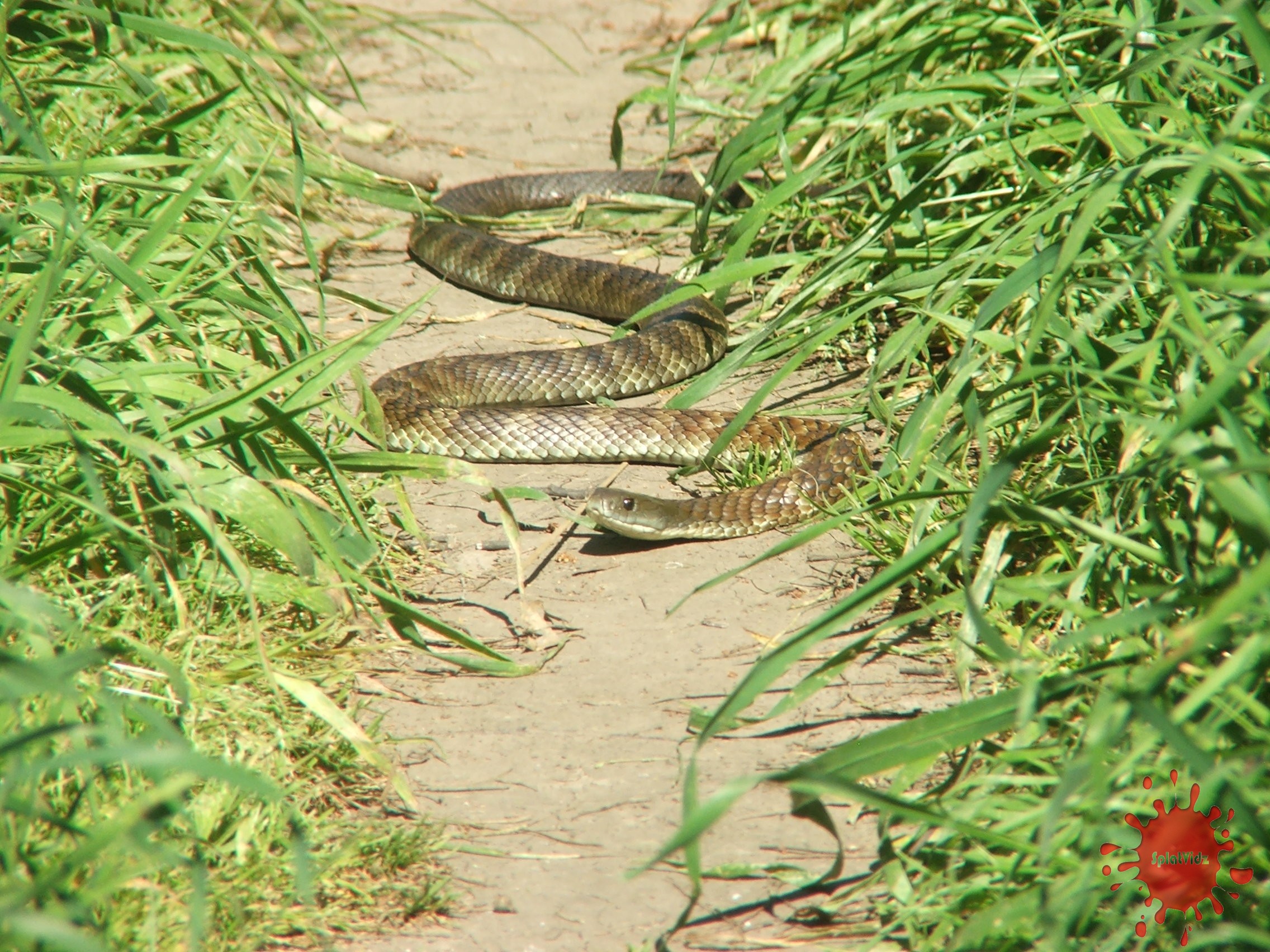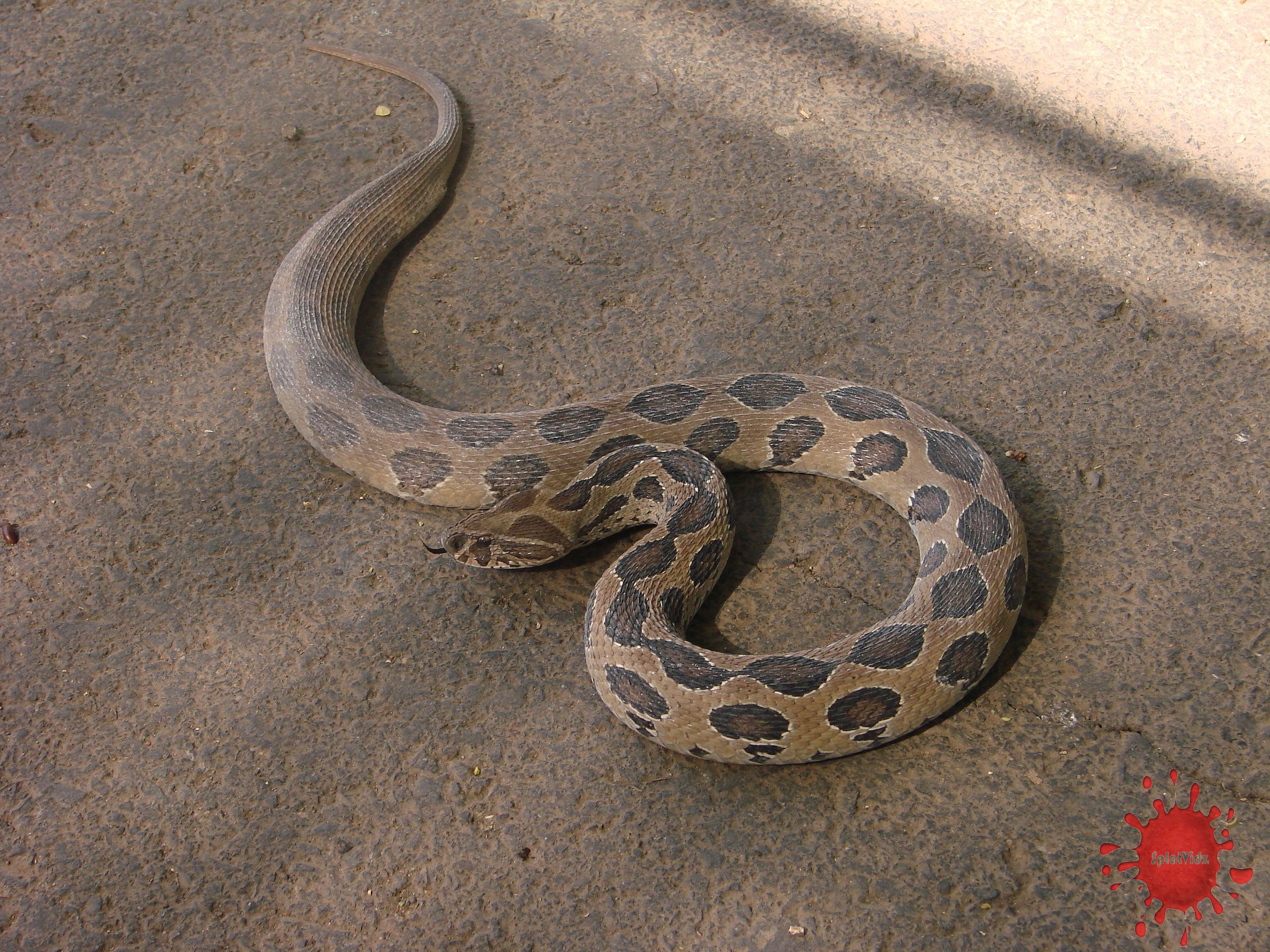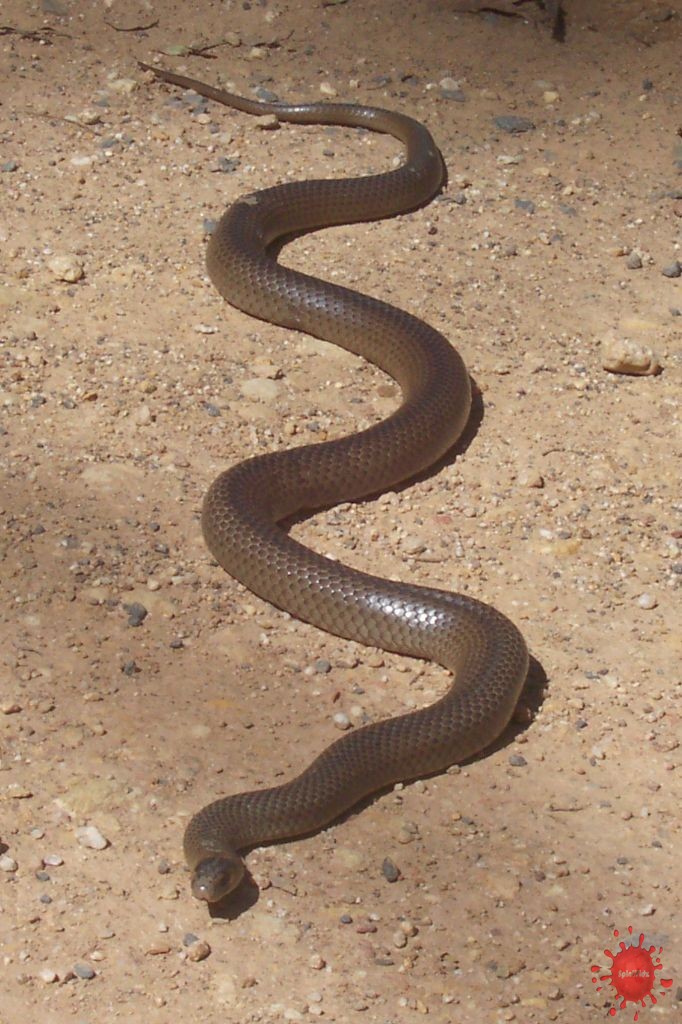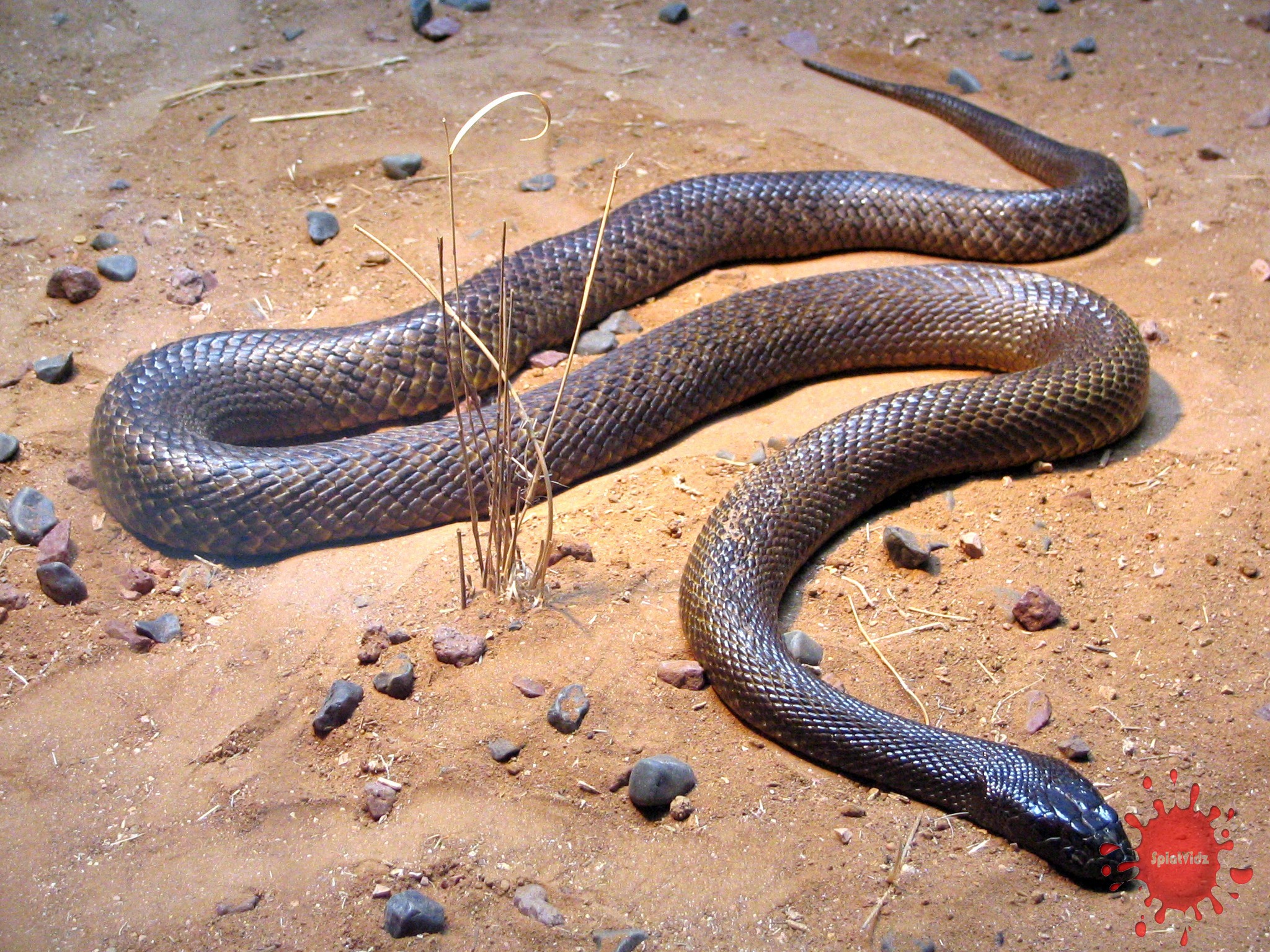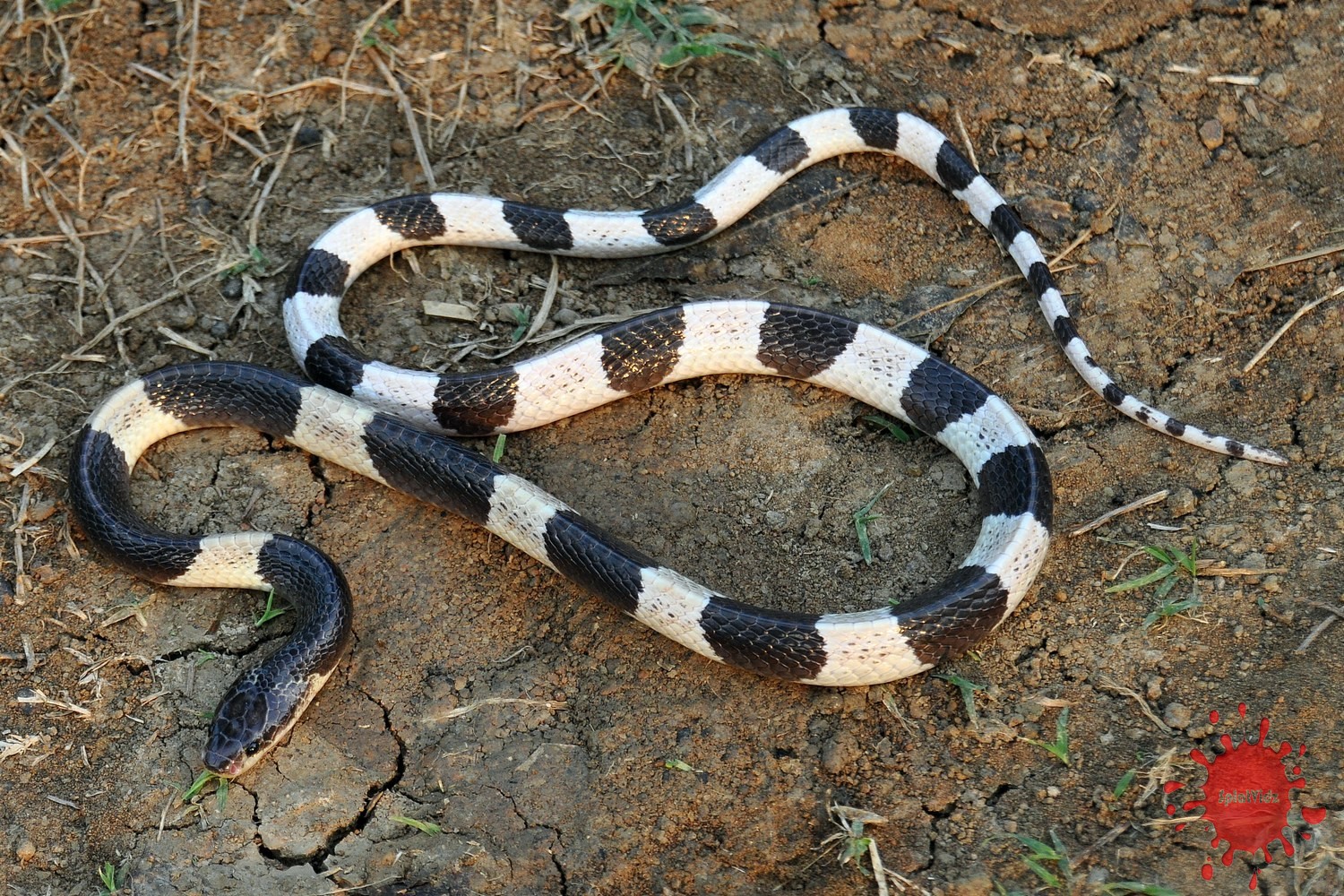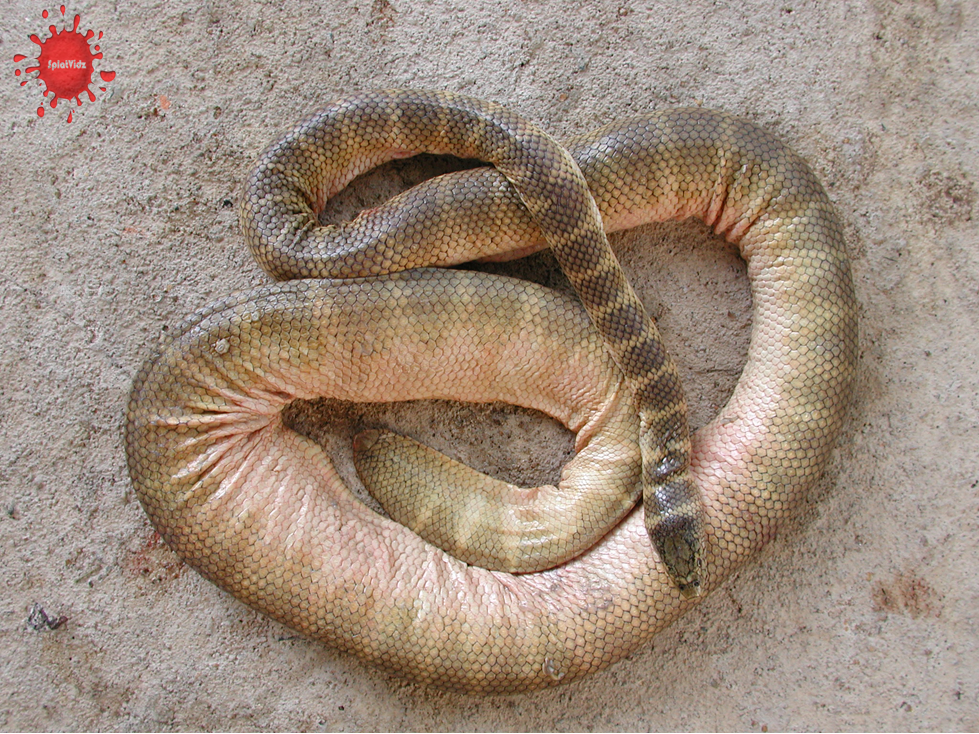Take a look starting with #10 all the way to the #1 deadliest snake in the world.
-
10 The Mojave Rattlesnake
- Average Size: 3.3 feet
- Geographical Range: Southwestern United States and central Mexico
- Conservation Status: Least Concern (Population Stable)
The Mojave Rattlesnake, also known as the Mojave Green, is a highly venomous and poisonous pit-viper species. It is found mostly in the desert regions of the southwestern United States as well as central Mexico and considered by scientists to possess the most poisonous venom of all rattlesnake species. The Mojave Rattlesnake grows to around 3.3 feet in length (on average), with the largest reaching lengths of 4.5 feet.
The snake’s color can vary from light green to brown, allowing it to easily blend in with nearby surroundings. The snake closely resembles the Western Diamondback Rattler, with the main difference being the bands along their rattle-tails; the Western Diamondback's bands are bright white, while the Mojave Rattlesnake's bands are dullish white-beige.
Mojave Rattlesnake Bite Symptoms and Treatment
The venom of the Mojave Rattlesnake is extremely deadly, and nearly matches the toxicity of several elapids (such as the King Cobra).
Bites from the Mojave Rattler can have delayed symptoms, which causes individuals to often underestimate the severity of their bite. However, within just a few hours, your vision becomes impaired, you'll more than likely have difficulty speaking and swallowing, as well as muscle weakness all of these are common symptoms. Moreover, the venom often causes difficulty breathing and often leads to respiratory failure if prompt medical treatment is not sought.
Despite its potency, however, fatalities from the Mojave Rattlesnake are relatively rare due to the prominence of CroFab antivenom. This antivenom, which uses the Mojave Rattlesnake venom in its manufacture and development, is highly effective for neutralizing the effects of the snake’s bites.
-
9 Philippine Cobra
- Average Size: 3.3 feet
- Geographical Range: Northern Philippines
- Conservation Status: Near Threatened (Population Decreasing)
The Philippine Cobra, also known as the Northern Philippine Cobra, it's a highly venomous snake residing in the northernmost corners of the Philippine islands. It often inhabits the low-lying plains and forest regions of the Philippine Islands and is often found near fresh water.
The species is quite stocky and possesses a hood that can be raised when threatened. The snake tends to look brown in color, with older snakes having a lighter brown appearance with age. The average length of the cobra is approximately 3.3 feet, but some Philippine Cobras have been known to reach lengths in excess of 5.2 feet.
Philippine Cobra Bite Symptoms and Treatment
Composed of a postsynaptic neurotoxin that directly affects the respiratory system of its victims, the venom of the Philippine Cobra is extremely potent and poisonious. It is also known to quickly cause paralysis of the neuromuscular system.
Symptoms of a cobra’s bite include: extreme nausea, vomiting, migraines, abdominal pain, dizziness, diarrhea, difficulty speaking and/or breathing. Unlike the Mojave Rattlesnake, symptoms often appear very rapidly (within 30 minutes).
Although treatments are available to help mitigate the venom, they are not always successful, and the cobra’s bites often result in death. To make matters worse, the Philippine Cobra also possesses the ability to spit its venom at potential victims, causing serious damage to the eyes if hit (including permanent blindness).
-
8 Death Adder
The Death Adder is a highly venomous elapid snake found in Australia, New Guinea, and the surrounding region. It is considered one of the deadliest snakes in the world, with approximately seven different species. Although the Death Adder has a viper-like appearance, it is actually a member of the elapid family of snakes, which includes Cobras and Black Mambas.
Death Adders are not long snakes they're actually quite short, with triangular heads and small scales covering their bodies. They also possess very large fangs, as well as a “lure” at the end of their tail that resembles a small worm that attracts prey. Typically, the Death Adder maintains a shade of black or grey. However, some Death Adder species can take on a reddish-yellow, brown, or greenish-grey hue.
Death Adder Bite Symptoms and Treatment
The Death Adder’s venom is a highly toxic poisonous neurotoxin. Bites from a Death Adder are extremely deadly and can result in death within a very short time usually about six hours if treatment is not sought out. Similar to other snakes in this list, the venom often causes paralysis, as well as a complete respiratory system shutdown. Although antivenoms have been developed for the Death Adders, deaths still occur from their bite as antivenom is only able to slow down the progression of symptoms to a degree.
-
7 Tiger Snake
- Average Size: 3.9 feet
- Geographical Range: Southeastern Australia (including the Bass Strait islands and Tasmania), and the southwestern part of Australia
- Conservation Status: Least Concern (Population Stable)
The Tiger Snake is a highly venomous snake that is found along the southern sector of Australia and Tasmania. The Tiger Snake can often be found in coastal regions, wetlands, and marshes due to the abundance of prey in these sorts of environments.
Tiger Snakes reach a size of approximately 3.93 feet in length and come in a wide variety of colors depending on their location (olive, yellow, orange, brown, and black). Similar to cobras, the tiger snake can be very aggressive when startled, and will flatten its body in order to raise its head above ground level.
Tiger Snake Bite Symptoms and Treatment
The Tiger Snake’s venom is comprised of highly potent neurotoxins, coagulants, myotoxins, and haemolysins. Symptoms of their bite include extreme pain in the foot and neck, body tingling, excessive sweating, numbness, trouble breathing, and paralysis. Luckily, there is an effective antivenom (provided that the bite victim receives care in time).
The mortality rate for untreated Tiger Snake bites is nearly 60%. Of the recorded snake bites in Australia between 2005 and 2015, Tiger Snakes accounted for approximately 17% of all bites in the region (Wikipedia.org). Out of 119 bites, 4 individuals died from complications.
-
6 Russell's Viper
- Average Size: 4 feet
- Geographical Range: India, Sri Lanka, Bangladesh, Nepal, Myanmar, Thailand, Pakistan, Cambodia, Tibet, China (Guangxi, Guangdong), Taiwan, and Indonesia
- Conservation Status: Least Concern (Population Stable)
Russell’s Viper, also known as the Chain Viper, is a venomous snake from the Viperidae family. It is found mostly in Southeast Asia, China, Taiwan, and India. Chain Vipers are very common and are typically found in grasslands or brushy areas. They are also common around farms and tend to avoid forested regions, as well as marshes, and swamps.
One of the Chain Viper's primary food sources is rodents. As a result, these snakes are unfortunately often found around human settlements, given the fact that rats and mice tend to stay close to humans.
Chain Vipers possess flat, triangular heads, with rounded (and raised) snouts. Their color patterns vary by snake, but they are typically yellow, tan, and brown in color. These deadly snakes can reach lengths of 5.5 feet, with a width of approximately six inches.
Chain Viper Bite Symptoms and Treatment
Chain Vipers produce a considerable amount of venom in their bites, which are highly lethal to humans in doses of 40–70 milligrams.
Common symptoms from a Chain Viper bite include excessive bleeding (particularly in the gums and urine), a rapid drop in blood pressure (and heart rate), blistering, necrosis, vomiting, facial swelling, kidney failure, and blood clotting.
For individuals who seek emergency attention, antivenom is relatively effective against the Chain Viper. However, pain from the bite can often continue for approximately four weeks and is known to cause severe tissue damage. Approximately 29% of survivors also suffer from damage to their pituitary glands.
-
5 Black Mamba
- Average Size: 6.6–10 feet
- Geographical Range: Southern and eastern Africa
- Conservation Status: Least Concern (Population Stable)
The Black Mamba is a species of extremely venomous snake that resides in Sub-Saharan Africa. This snake is also known to live on both the ground as well as in trees. As a result, they are often found along savannas, woodlands, forests, and rockier regions. It is in these regions that the Black Mamba often preys on birds and other small animals. Given its quick speed (around 10 miles per hour), the snake is able to overcome most of its prey with ease.
The Mamba is also known for its long length, at approximately 6.6 feet to 10 feet on average. Some Black Mambas have even reached horrifying lengths of nearly 14.8 feet, making it one of the longest venomous snakes in the world. The Black Mamba often maintains a color of grey, olive, and dark brown, with adults being far darker than younger mambas.
Black Mamba Bite Symptoms and Treatment
Unlike other snakes, the Black Mamba typically delivers several bites when it strikes. Its venom, which is composed primarily of neurotoxins, induces symptoms within a span of 10 minutes and is fatal if antivenom is not administered almost immediately.
Rather than causing local swelling and necrosis (like many venomous snake bites), a Black Mamba’s venom often causes severe tingling, a metallic taste in the mouth, drooping eyelids, neurological dysfunction, blurred vision, and paralysis of the respiratory system. Extreme drowsiness, inability to speak, nausea, vomiting, and extreme sweating are also common symptoms.
Humans that are bitten by a Black Mamba will usually die within anywhere from 30 minutes to 3 hours after injection if medical treatment is not administered rapidly, but fatalities have been reported in as little as 20 minutes after injection. Unfortunately, antivenom is not widely available in many of the rural areas the Black Mamba calls home, where deaths caused by this highly venomous snake are still very frequent.
-
4 Eastern Brown Snake
- Average Size: 4.9–6.6 feet
- Geographical Range: Eastern and central Australia and southern New Guinea
- Conservation Status: Least Concern (Population Stable)
Eastern Browns are found in nearly all environments, except for dense forests, around Australia. They are most common around farms, as their main prey includes the populous house mouse.
This extremely deadly snake is quite slender in appearance and reaches an average length of 4.9 to 6.6 feet. As its name indicates, the Eastern Brown is typically brown in color, with some snakes taking on a blackish appearance as well. Eastern Browns are well known for their small fangs, dark tongues, and dark black eyes. They are also quite solitary snakes and tend to be most active during the daylight hours.
Eastern Brown Snake Bite Symptoms and Treatment
The Eastern Brown Snake’s venom is extremely deadly and is responsible for more deaths in Australia than any other snake species in the country. Out of 35 reported snake-bite deaths between 2000 and 2016 in Australia, 23 of the were caused by the Eastern Brown Snake (University of Melbourne, 2017).
That being said, bites from this snake have a fairly low mortality rate—just 10–20%—since the snake does not typically deliver a high volume of venom with each bite. Early symptoms of an Eastern Brown Snake bite include coagulation of the blood, a sudden drop in blood pressure, severe bleeding, and heart failure. Other symptoms include kidney failure, extreme nausea and vomiting, and migraines.
Symptoms begin rapidly (within 15 minutes of being bitten). However, depending on the amount of venom injected during the bite, some individuals have been known to develop extreme symptoms within only two minutes.
Neurotoxicity is rare with the Eastern Brown Snake’s bite, as its venom typically attacks the cardiovascular system of its victim. Although antivenom has been available since 1956, the rapid onset of symptoms often negates the benefits of the antivenom, as victims often slip into cardiac arrest before appropriate care can be given.
-
3 Inland Taipan
- Average Size: 5.9 feet
- Geographical Range: The west and southwest of Queensland, far west of New South Wales into the northeast corner of South Australia, and the southeast of the Northern Territory
- Conservation Status: Least Concern (Population Stable)
The Taipan is a highly venomous snake that resides in Australasia. It is a member of the elapid family (which includes cobras) and is considered to be one of the deadliest snakes in the world today. There are three known species of the Taipan, including the Coastal Taipan, Inland Taipan, and the Central Ranges Taipan. Most of the Taipan species are found along the northeast coast of Queensland, as well as the southern sector of Papua New Guinea. It primarily feeds on rats and bandicoots, along with other small mammals.
Tapian Bite Symptoms and Treatment
The Taipan’s venom contains high levels of neurotoxins. One bite from a Taipan often results in paralysis of the victim’s nervous system and clots the blood, preventing an adequate flow of blood through the blood vessels. Headache, nausea/vomiting, convulsions, paralysis, and myolysis are also common results of Taipan bites, with respiratory paralysis setting in anywhere from 2 to 6 hours after the bite.
Prior to the development of Taipan-specific antivenom in 1956, only two individuals were reported to have survived the snake’s bite. But the window of use for this antivenom is fairly small, so getting medical help immediately is critical (as with all venomous snake bites, of course!).
-
2 Blue Krait
- Average Size: 3.6 feet
- Geographical Range: Throughout Thailand and much of Southeast Asia
- Conservation Status: Least Concern (Population Stable)
The Blue Krait, or Malayan Krait, is a highly venomous snake of the elapid family. On average, the snake reaches lengths of approximately 3.6 feet and maintains a color pattern of bluish-black crossbands that are separated by yellowish-white interspaces.
The Blue Krait is found predominantly in southeast Asia, including Indochina and Indonesia. It primarily feeds on mice, other snakes (including other Blue Kraits), reptiles, and small rodents.
Current studies have shown that the Blue Krait prefers fields, holes, and even homes for its habitat. The Blue Krait is also fond of water sources and is often found near rivers, lakes, and ponds. It is also been found that Blue Kraits are primarily nocturnal in their hunting habits.
Blue Krait Bite Symptoms and Treatment
The Blue Krait’s venom is highly potent and consists of extremely powerful neurotoxins that paralyze its victim’s muscular system. The neurotoxins are made up of presynaptic and postsynaptic toxins that are known to directly attack an individual’s ability to speak or think clearly. The Blue Krait’s venom also attacks an individual’s respiratory system, causing suffocation from an inability to breathe within four hours.
Other symptoms of a krait’s bite include paralysis, severe abdominal pain/cramps, tightened facial muscles, as well as blindness. Unlike other snakes, such as the Chain Viper, which produce anywhere from 40–70 milligrams of venom in their bite, the Blue Krait produces only 10 mg. Even this small amount, however, is extremely potent and provides the same effects of other venomous snakes listed on this article with only a fourth of their overall levels.
Although people often experience no pain from a krait bite (providing them with false reassurance), death is common within four hours if left untreated. Untreated mortality rates for Blue Krait bites are an astounding 70–80%.
-
1 Belcher's Sea Snake
- Average Size: 1.5–3.3 feet
- Geographical Range: Primarily near the tropical reefs of the Indian Ocean, Gulf of Thailand, New Guinea, Indonesia, and the coastline of the Philippines (with some specimens found off the coast of Australia and the Solomon Islands)
- Conservation Status: Unknown (Data Deficient)
The Belcher’s Sea Snake, also known as the Faint-Banded Sea Snake, is an extremely venomous snake of the elapid family. Despite its shy and timid temperament, the Belcher’s Sea Snake is considered the most poisonous snake in the world. The snake is relatively small in size, with a slender body and a yellow base with green crossbands.
It is commonly found in the Indian Ocean, as well as the Philippines, Gulf of Thailand, the Solomon Islands, and the northwest coasts of Australia. It is typically found along tropical reefs and can hold its breath for nearly eight hours before resurfacing for air. Current observations indicate that the Belcher's Sea Snake typically eats small fish and eel.
Belcher's Sea Snake Bite Symptoms and Treatment
The Belcher's Sea Snake is so poisonous that a single bite can kill an individual in less than 30 minutes. Studies have also shown its venom to be 100 times the strength of the Inland Taipan snake. Luckily, the snake’s mild manner and temperament often prevent it from attacking humans. Moreover, scientific studies have shown that the snake can control its venom secretion, and only releases venom in a quarter of its bites.
The snake’s venom contains high levels of neurotoxins and myotoxins. One drop of its venom is thought to be strong enough to kill 1,800 people. General symptoms of their bite are extreme nausea and vomiting, migraine headache, diarrhea, extreme abdominal pain, dizziness, and convulsions. Other symptoms include paralysis, muscle impairment, extreme bleeding, hysteria, respiratory failure, and renal failure.
Although antivenoms exist to counteract the snake’s deadly bite, immediate treatment is crucial for preventing death.




